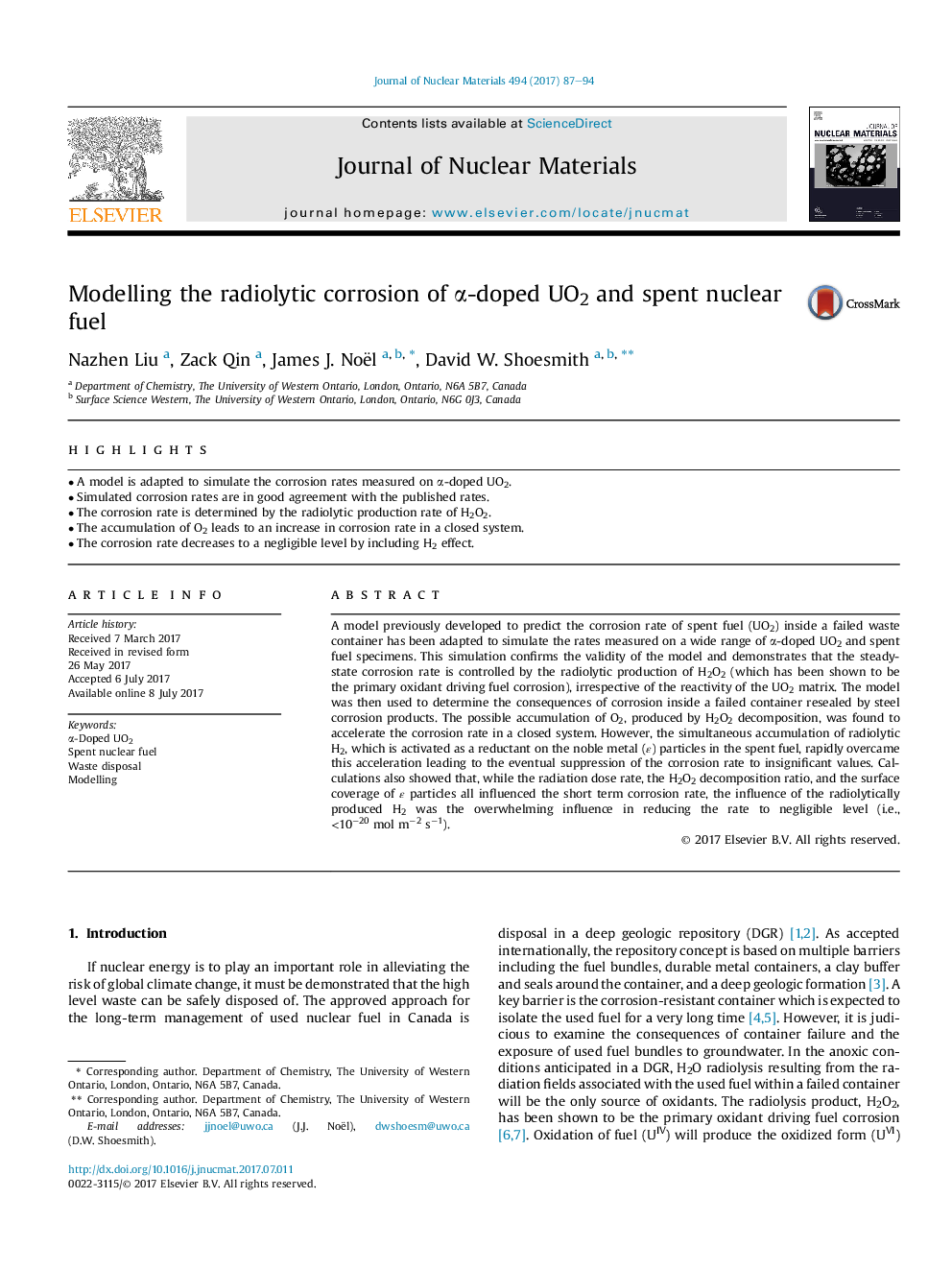| Article ID | Journal | Published Year | Pages | File Type |
|---|---|---|---|---|
| 5454079 | Journal of Nuclear Materials | 2017 | 8 Pages |
Abstract
A model previously developed to predict the corrosion rate of spent fuel (UO2) inside a failed waste container has been adapted to simulate the rates measured on a wide range of α-doped UO2 and spent fuel specimens. This simulation confirms the validity of the model and demonstrates that the steady-state corrosion rate is controlled by the radiolytic production of H2O2 (which has been shown to be the primary oxidant driving fuel corrosion), irrespective of the reactivity of the UO2 matrix. The model was then used to determine the consequences of corrosion inside a failed container resealed by steel corrosion products. The possible accumulation of O2, produced by H2O2 decomposition, was found to accelerate the corrosion rate in a closed system. However, the simultaneous accumulation of radiolytic H2, which is activated as a reductant on the noble metal (ε) particles in the spent fuel, rapidly overcame this acceleration leading to the eventual suppression of the corrosion rate to insignificant values. Calculations also showed that, while the radiation dose rate, the H2O2 decomposition ratio, and the surface coverage of ε particles all influenced the short term corrosion rate, the influence of the radiolytically produced H2 was the overwhelming influence in reducing the rate to negligible level (i.e., <10â20 mol mâ2 sâ1).
Related Topics
Physical Sciences and Engineering
Energy
Nuclear Energy and Engineering
Authors
Nazhen Liu, Zack Qin, James J. Noël, David W. Shoesmith,
